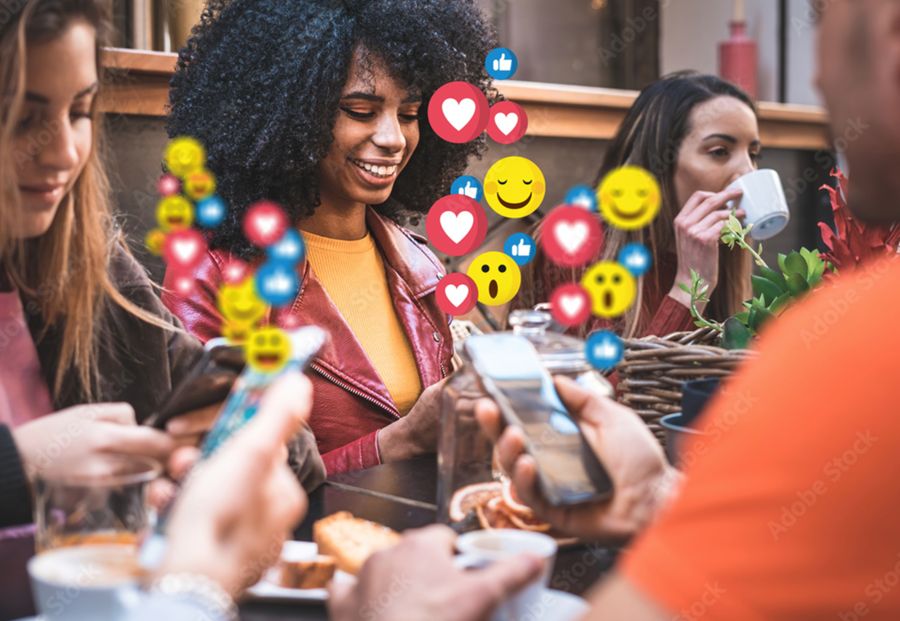 The global meat alternatives market is projected to grow from $5.88 billion in 2022 to $12.30 billion by 2029, with many fast-food brands like Burger King, McDonald’s, and KFC adding meat alternative options to their offerings. When advertising such products, brands often use negative emotions, for example, disgust or guilt, to appeal to consumers. Moreover, the importance of emotional factors is reflected in the design of social media platforms themselves, as Facebook users for instance are prompted with easily accessible emoji reaction controls below each post to express emotions toward the content. In the literature, much attention has also been directed at emotional factors. However, researchers have called for more insights on how positive emotions can drive the effectiveness of a social media advertisement.
The global meat alternatives market is projected to grow from $5.88 billion in 2022 to $12.30 billion by 2029, with many fast-food brands like Burger King, McDonald’s, and KFC adding meat alternative options to their offerings. When advertising such products, brands often use negative emotions, for example, disgust or guilt, to appeal to consumers. Moreover, the importance of emotional factors is reflected in the design of social media platforms themselves, as Facebook users for instance are prompted with easily accessible emoji reaction controls below each post to express emotions toward the content. In the literature, much attention has also been directed at emotional factors. However, researchers have called for more insights on how positive emotions can drive the effectiveness of a social media advertisement.
As marketers aim to enhance organic reach, they often focus on either motivating consumers to act on an offer or convincing them that their offer is the best choice. These tactics reflect the two motivations of goal pursuit in regulatory mode theory: locomotion – a motivation to “act” by moving towards a goal – and assessment – a motivation to be “right” or to choose the “best” option. As these motivations can be induced by using the right language, regulatory mode theory is starting point to investigate how posts that emphasize the best option or a call to action can be integrated into existing social media strategies to increase effectiveness.
Against this backdrop, the present research investigates the interactive effect between regulatory mode (locomotion vs. assessment) and two distinct positive emotions (awe and love) for driving social media engagement in advertising, in the context of meat alternatives. In particular, it proposes that different, discrete positive emotions could interact with regulatory mode to create fit effects, specifically between assessment orientation and the emotion of awe, and between locomotion orientation and the emotion of love. Moreover, these fit effects are driven by the experience of “feeling right”, which is when a person experiences a sense of importance and correctness when a message fits their regulatory orientation.
Method and sample
The predictions were tested across four studies. Study 1 collected secondary social media data from 966 Facebook posts by Impossible Foods, a plant-based patty brand that held 55% market share in US-based supermarkets. In this study, emotion was measured by emoji reactions, for example, a post with a high number of “wow” reactions can be associated with the emotion of awe, while a high number of “love” reactions reflect strong affection and attachment. Assessment and locomotion motivations in the data were determined using the regulatory mode dictionary from prior research. Social media engagement was measured by shares of the Facebook posts.
Next, Studies 2, 3, and 4 used experimental design in the context of Facebook advertising to establish causal relationships. With a sample of 450 participants located in the US and recruited from MTurk, Study 2 examined how emotion in terms of emoji reaction and regulatory mode impact engagement, as measured by click-through rates (CTR) of the Facebook ads. Study 3 recruited 459 participants located in the US from Prolific and examined how emotion recall and regulatory mode together affect their intentions to click on the link in the ad. Finally, Study 4 used images that elicit different emotions to test the effect on the ads’ CTR, with a sample of 450 participants located in the U.S. from Prolific.
Key findings
- The results of Study 1 provided initial support for the interactive effect of regulatory mode and emotion on social media engagement (sharing).
- In Study 2, it was found that the positive effect of “wow” emoji (vs. no emoji) emerged when assessment messages were used, while the positive effect of “love” emoji (vs. no emoji) emerged when assessment messages were used.
- Study 3 replicated the findings of Study 2 by directly manipulating emotions by measuring participants’ emotion recall, as well as examining the effect on intentions to click rather than CTR.
- Finally, Study 4 offered strong support for the predictions by a different emotion manipulation method (via images). More importantly, it demonstrated the experience of feeling right as the underlying process that drives the effect of emotion and regulatory mode on social media engagement.
Researcher
More information
The research article is also available on eprints.